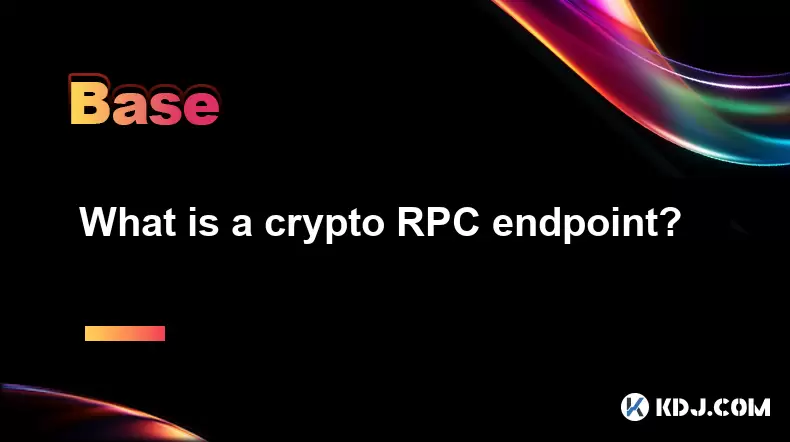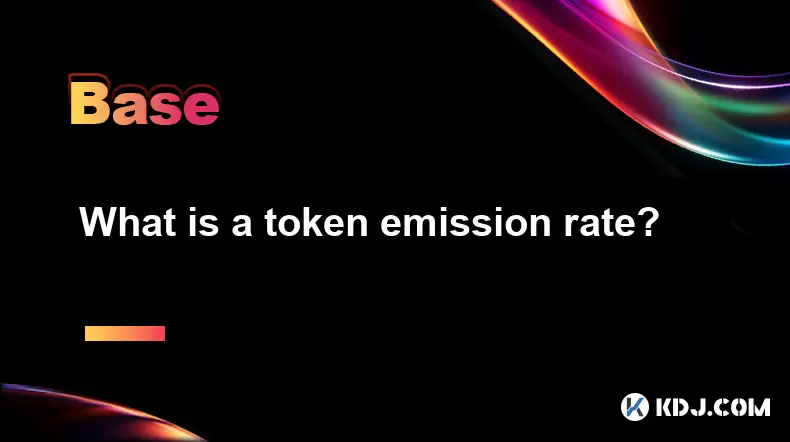-
 Bitcoin
Bitcoin $108,778.4882
0.68% -
 Ethereum
Ethereum $2,563.3783
2.01% -
 Tether USDt
Tether USDt $1.0001
-0.01% -
 XRP
XRP $2.2881
0.77% -
 BNB
BNB $662.2819
1.12% -
 Solana
Solana $152.2652
3.21% -
 USDC
USDC $0.9999
-0.01% -
 TRON
TRON $0.2873
0.90% -
 Dogecoin
Dogecoin $0.1715
4.20% -
 Cardano
Cardano $0.5868
1.50% -
 Hyperliquid
Hyperliquid $39.6796
1.73% -
 Sui
Sui $2.9136
0.85% -
 Bitcoin Cash
Bitcoin Cash $495.4980
1.77% -
 Chainlink
Chainlink $13.5765
3.06% -
 UNUS SED LEO
UNUS SED LEO $9.0753
0.53% -
 Stellar
Stellar $0.2503
3.73% -
 Avalanche
Avalanche $18.2012
1.86% -
 Shiba Inu
Shiba Inu $0.0...01174
1.83% -
 Toncoin
Toncoin $2.7998
-6.08% -
 Hedera
Hedera $0.1596
3.89% -
 Litecoin
Litecoin $87.3119
0.20% -
 Monero
Monero $319.5596
1.08% -
 Polkadot
Polkadot $3.3887
0.93% -
 Dai
Dai $0.9999
-0.01% -
 Ethena USDe
Ethena USDe $1.0001
-0.01% -
 Bitget Token
Bitget Token $4.3294
-1.36% -
 Uniswap
Uniswap $7.3898
1.60% -
 Aave
Aave $287.5336
5.76% -
 Pepe
Pepe $0.0...01005
3.24% -
 Pi
Pi $0.4588
1.90%
What is a crypto RPC endpoint?
A crypto RPC endpoint enables developers to interact with blockchain networks by sending commands and retrieving data like transaction details or wallet balances through HTTP requests.
Jul 07, 2025 at 10:49 am

Understanding the Basics of a Crypto RPC Endpoint
A crypto RPC endpoint stands for Remote Procedure Call endpoint, which is an essential part of interacting with blockchain networks. In simple terms, it acts as a communication channel that allows developers and applications to send commands or queries to a blockchain node. This interface enables users to retrieve data such as transaction details, wallet balances, or smart contract states without needing direct access to the node's backend.
The RPC protocol functions similarly to a web API, where specific methods are called with defined parameters. For example, in Ethereum-based systems, you might use eth_getBalance to fetch an account’s balance by sending a request to the RPC endpoint.
How Crypto RPC Endpoints Work
When working with a blockchain like Ethereum or Binance Smart Chain, nodes run continuously to maintain the network. A crypto RPC endpoint provides a way to interact with these nodes remotely. Developers can send HTTP POST requests containing JSON payloads to trigger certain actions on the blockchain.
For instance:
- To get the latest block number, one would call
eth_blockNumber. - To check a transaction receipt,
eth_getTransactionReceiptis used.
These methods require connecting to a valid RPC endpoint URL provided by services like Infura, Alchemy, or self-hosted nodes.
Each method has specific input requirements, often involving hex-encoded values and chain identifiers (like mainnet, rinkeby, or custom chain IDs).
Setting Up a Connection to a Crypto RPC Endpoint
Connecting to a crypto RPC endpoint involves several steps:
- Choose a provider: Select a service like Infura, Alchemy, or QuickNode, or set up your own node using Geth or Parity.
- Obtain the endpoint URL: After signing up or configuring your node, you'll receive a unique HTTPS or WSS URL.
- Configure your application: In tools like Web3.js or Ethers.js, initialize a provider using the endpoint URL.
- Send requests: Use built-in libraries or manually construct JSON-RPC payloads to query or interact with the blockchain.
For example, in Web3.js:
const Web3 = require('web3');
const web3 = new Web3("https://mainnet.infura.io/v3/YOUR_PROJECT_ID");This code initializes a connection to the Ethereum mainnet via Infura's RPC endpoint.
Different Types of Crypto RPC Endpoints
Not all crypto RPC endpoints serve the same purpose or offer the same capabilities. Here are some common types:
- Public RPC endpoints: These are free-to-use but often rate-limited and unreliable. Examples include those provided by public nodes like
https://rpc.ankr.com/eth. - Private RPC endpoints: Offered by paid services like Infura and Alchemy, they provide better uptime, higher rate limits, and dedicated support.
- Self-hosted RPC endpoints: Running your own full node gives full control and privacy. Tools like Geth allow users to expose their own RPC endpoint via configuration flags.
- WebSocket RPC endpoints: Used for real-time updates, such as tracking new blocks or events emitted by smart contracts.
Each type suits different use cases — from development to production environments.
Security Considerations When Using RPC Endpoints
Using a crypto RPC endpoint introduces potential security risks. It's crucial to take precautions:
- Never expose private keys: RPC calls should never transmit sensitive information unless over secure, authenticated channels.
- Use HTTPS/WSS: Always ensure connections use encrypted protocols to prevent man-in-the-middle attacks.
- Rate limiting and authentication: Many providers use API keys to authenticate requests. Keep these keys confidential.
- Avoid public RPCs in production: Public endpoints may be unstable or monitored, potentially exposing sensitive interactions.
Misconfigured endpoints can lead to data leaks or denial-of-service scenarios. Therefore, it's vital to treat them with the same level of caution as any external API.
Frequently Asked Questions
Q: Can I build my own crypto RPC endpoint?
Yes, you can deploy your own crypto RPC endpoint by running a full node using software like Geth or Besu. You must configure the node to expose an RPC interface via HTTP or WebSocket.
Q: How do I find the correct RPC endpoint for a specific blockchain?
You can refer to official documentation or community resources for each blockchain. For example, Binance Smart Chain provides its RPC URLs on its developer portal, while Ethereum-compatible chains often list endpoints on Chainlist.org.
Q: Are all crypto RPC endpoints compatible with Ethereum-based tools?
Most RPC endpoints follow the Ethereum JSON-RPC standard, making them compatible with tools like MetaMask, Web3.js, and Truffle. However, non-EVM (Ethereum Virtual Machine) blockchains may have different RPC formats.
Q: What happens if my chosen RPC endpoint goes offline?
If your crypto RPC endpoint becomes unavailable, your application will lose access to real-time blockchain data. This could disrupt functionality such as transaction confirmations or event monitoring. Using multiple endpoints or fallback mechanisms helps mitigate this risk.
Disclaimer:info@kdj.com
The information provided is not trading advice. kdj.com does not assume any responsibility for any investments made based on the information provided in this article. Cryptocurrencies are highly volatile and it is highly recommended that you invest with caution after thorough research!
If you believe that the content used on this website infringes your copyright, please contact us immediately (info@kdj.com) and we will delete it promptly.
- Bitcoin Wallet Hack? Coinbase Exec Sounds the Alarm on $8B Whale Movement
- 2025-07-07 18:30:12
- Mercado Bitcoin, Tokenization, and XRP Ledger: A Latin American Power Play
- 2025-07-07 18:30:12
- Ripple's RLUSD: Revolutionizing Cross-Margin Trading for Institutions
- 2025-07-07 18:35:12
- Babylon, Bitcoin, and the EVM Mainnet: A New Era for BTCFi?
- 2025-07-07 16:30:11
- Queen Elizabeth Coin Sells for £31,000: A Royal Fortune in Your Pocket?
- 2025-07-07 16:30:11
- XRP Price Check: Will Resistance Trigger a July Drop?
- 2025-07-07 17:10:12
Related knowledge

What is a user-generated content (UGC) NFT platform?
Jul 04,2025 at 01:49pm
Understanding the Concept of a UGC NFT PlatformA user-generated content (UGC) NFT platform is a digital marketplace or ecosystem where users can create, mint, and trade non-fungible tokens (NFTs) that represent ownership of original digital content they produce. Unlike traditional NFT platforms where creators often include professional artists or develo...

What is composability in DeFi?
Jul 06,2025 at 04:07pm
Understanding the Concept of Composability in DeFiComposability in DeFi refers to the ability of decentralized finance protocols and smart contracts to interact seamlessly with one another, much like building blocks that can be combined in various ways to create new financial products and services. This concept is a core innovation within the DeFi ecosy...

What is a "crypto primitive"?
Jul 05,2025 at 10:14pm
Defining the Concept of a Crypto PrimitiveIn the context of blockchain and cryptocurrency, a crypto primitive refers to a fundamental building block or foundational element used in constructing decentralized systems and cryptographic protocols. These primitives are essential for enabling secure transactions, consensus mechanisms, and smart contract exec...

What is a fair launch?
Jul 05,2025 at 07:31pm
Understanding the Concept of a Fair LaunchA fair launch refers to the release of a cryptocurrency or blockchain project in a manner that ensures equal opportunity for all participants. Unlike traditional token launches, which may involve private sales, venture capital funding, or pre-mining, a fair launch emphasizes transparency and decentralization. In...

What is a token emission rate?
Jul 07,2025 at 02:51am
Understanding the Basics of Token Emission RateIn the realm of cryptocurrencies, token emission rate refers to the speed or frequency at which new tokens are generated and released into circulation within a blockchain network. This concept is fundamental in understanding how certain blockchain ecosystems manage inflation, incentivize participants, and m...

What is a cliff in tokenomics?
Jul 05,2025 at 07:18pm
Understanding the Concept of a Cliff in TokenomicsIn the world of cryptocurrency and blockchain, tokenomics plays a pivotal role in shaping the economic behavior of a digital asset. One of the key mechanisms used to manage token distribution is known as a cliff. This concept is commonly applied in projects that include vesting schedules for tokens, espe...

What is a user-generated content (UGC) NFT platform?
Jul 04,2025 at 01:49pm
Understanding the Concept of a UGC NFT PlatformA user-generated content (UGC) NFT platform is a digital marketplace or ecosystem where users can create, mint, and trade non-fungible tokens (NFTs) that represent ownership of original digital content they produce. Unlike traditional NFT platforms where creators often include professional artists or develo...

What is composability in DeFi?
Jul 06,2025 at 04:07pm
Understanding the Concept of Composability in DeFiComposability in DeFi refers to the ability of decentralized finance protocols and smart contracts to interact seamlessly with one another, much like building blocks that can be combined in various ways to create new financial products and services. This concept is a core innovation within the DeFi ecosy...

What is a "crypto primitive"?
Jul 05,2025 at 10:14pm
Defining the Concept of a Crypto PrimitiveIn the context of blockchain and cryptocurrency, a crypto primitive refers to a fundamental building block or foundational element used in constructing decentralized systems and cryptographic protocols. These primitives are essential for enabling secure transactions, consensus mechanisms, and smart contract exec...

What is a fair launch?
Jul 05,2025 at 07:31pm
Understanding the Concept of a Fair LaunchA fair launch refers to the release of a cryptocurrency or blockchain project in a manner that ensures equal opportunity for all participants. Unlike traditional token launches, which may involve private sales, venture capital funding, or pre-mining, a fair launch emphasizes transparency and decentralization. In...

What is a token emission rate?
Jul 07,2025 at 02:51am
Understanding the Basics of Token Emission RateIn the realm of cryptocurrencies, token emission rate refers to the speed or frequency at which new tokens are generated and released into circulation within a blockchain network. This concept is fundamental in understanding how certain blockchain ecosystems manage inflation, incentivize participants, and m...

What is a cliff in tokenomics?
Jul 05,2025 at 07:18pm
Understanding the Concept of a Cliff in TokenomicsIn the world of cryptocurrency and blockchain, tokenomics plays a pivotal role in shaping the economic behavior of a digital asset. One of the key mechanisms used to manage token distribution is known as a cliff. This concept is commonly applied in projects that include vesting schedules for tokens, espe...
See all articles

























































































